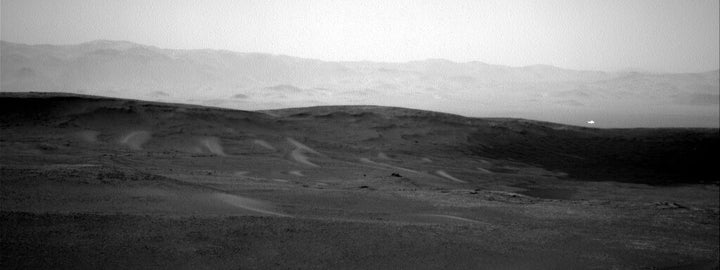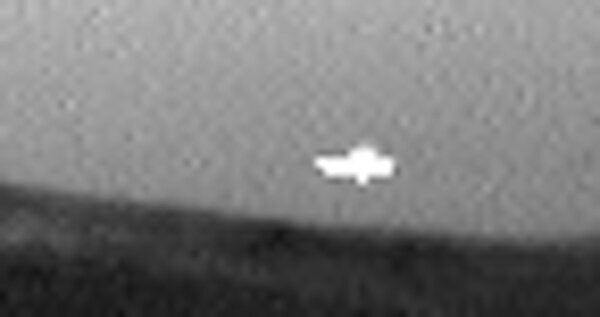Nasa’s Mars Curiosity rover spotted a strange glowing object that seemed to hover just above the surface of the Red Planet earlier this month.
While the glint on Mars has captured the imagination of folks on social media, it was likely just sunlight, a cosmic ray or a camera artefact. But in an unrelated development days later, the rover detected something else ― and it could be a long-sought signal of possible microbial life on or inside the planet.
The glowing object was captured on camera ― look at the right side of this raw image taken from the Nasa website on June 16:

Here it is zoomed in:

It doesn’t appear on any of the images snapped before or after, taken about 13 seconds apart, so if it was an object of some kind it moved quickly. More likely, however, it was nothing too out of the ordinary.
“In the thousands of images we’ve received from Curiosity, we see ones with bright spots nearly every week,” Justin Maki of Nasa’s Jet Propulsion Laboratory said in 2014 when a similar flash of light made headlines. “These can be caused by cosmic-ray hits or sunlight glinting from rock surfaces, as the most likely explanations.”
So, the flash of light was unlikely to be a sign of activity on the planet.
But something else was detected on Mars last week that just might be a sign of life: methane. The New York Times reported that Curiosity detected a spike in methane, which, if confirmed, could hint of microbial life hidden beneath the surface of Mars.
There were other possible explanations:
The rover spent the weekend conducting follow-up tests in an attempt to confirm the results, with more analysis ongoing. Nasa said the rover had detected methane in the past, and the planet seemed to have seasonal peaks and dips.
Definitive answers could be tough to come by.
“With our current measurements, we have no way of telling if the methane source is biology or geology, or even ancient or modern,” Paul Mahaffy of Nasa Goddard Spaceflight Centre said in a news release.
Nasa is coordinating with the scientists working with the European Space Agency’s Trace Gas Orbiter, which is orbiting Mars, to find the origin of the gas.

